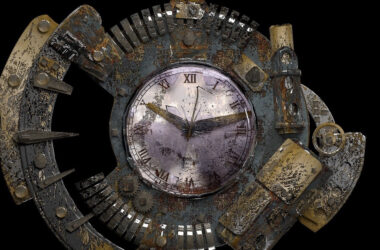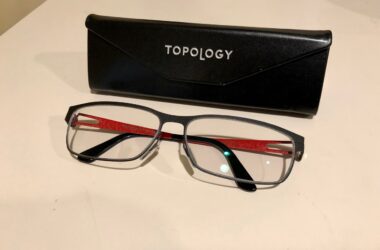Minority Report was a 2002 film, based on a Philip K. Dick novella of the same name, about what happens when a couple of oracles who can see possible futures are used by the police as a mechanism for predicting crimes before they happen. At the heart of both the book and the movie are questions about free will and determinism. But, the movie adaption layers on heavy elements of science fiction and futurism on top of the core concept: a cinematic equivalent of a World of Tomorrow at the beginning of the 21st century, imagining what society could look like in ½ a century.
The movie holds up really well! The central murder mystery remains intriguing, the faux operating systems don’t look out of place in VisionOS, and the prototype vehicle is still a looker in 2024. Rewatching the movie about 2 decades after its release and another 3 decades to go from the year that the story takes place, it’s a fun little exercise to go through and gauge how the progress we’ve made, a little less than ½-way through this predictive timeframe. As you’ll see, a couple of key milestones in the tech coincide with recent developments, so this is a timely review.
If it’s not obvious, there’ll be spoilers.
In rough order of chronological appearance:
Precogs. The precognitives are more of a plot device than something based on known or future science.
Brain scan imagery. Neuralink announced earlier this year that they implanted a chip in a human for the first time, which is the splashiest piece of news in this domain. There’s been ongoing research for decades about reading signals from the brain, but it seems far-fetched to be able to record full videos of memory, even 30+ years into the future, based on how slow progress has been so far.
Transparent displays. These were shown off during CES 2024 this year! Even this first generation of displays is taking advantage of the transparency for a bit of image depth, but we’ve made a ton of progress in screen tech in the last 20 years. That said, it’s not clear whether transparent screens are actually useful, or if they’re mostly cool-looking in movies and showrooms.
Physical data drives. This was probably more of a cinematic choice than anything practical, even back in 2002. Wireless data transfers are much easier and more efficient than slotting giant pieces of glass around.
Gloves interface. As the Vision Pro showcases, we’re much further along here than what Minority Report imagined we’d be 30 years from now; we don’t even need gloves for cameras to capture and interpret our hand motions. It’s one of the few items here where the tech has advanced much faster than we thought possible in the early 2000s.
Eye scans. Yes, we already have the tech to do iris and retinal scanning. But having scans ID their subjects instantly is a leap too far, and having an advertisement talk to its subject is impractical. Plus, in the years since the movie, we’re just as likely staring down at our phones as staring ahead for the scanners to capture our eyes anyway.
Jetpacks. Not a thing, and at this point, unlikely to ever be a thing, at least with fossil fuels as propulsion—the energy density isn’t high enough to make it feasible. The main hope is waiting for drone tech to advance and repurpose their research and tech.
3D video projections. Not quite Star Wars holograms, and the movie uses multiple projectors to triangulate a 3D image. We don’t have anything that can project independently in space, but a company like Looking Glass has been building hologram displays that can project 3D images and videos, and the spatial videos within the Vision Pro have an eery, memory-like quality in their rendering.
Maglev transportation. This is definitely sci-fi, and not something that can realistically happen in Washington, D.C. where the story takes place. The work towards autonomous driving and connected vehicle mesh networks provide some building blocks, but the massive infrastructure needed to make use of these pill-shaped cars, the additional roads and ramps that’d have to be built to accommodate the traffic, make this a non-starter. Even the megaproject city proposals don’t try anything this futuristic.
Automated car factory. New automotive factories have been designed with more automation; the latest features a lot more robotics and a lot fewer engineers tasked with keeping the automatons running. It’s conceivable, but unlikely, to have a factory crank out cars all by its lonesome.
Halos. In the movie, the Precrime unit neutralizes a suspect by putting a headband on them, stopping their brain from controlling their body. Like the brain scan tech above, this doesn’t seem realistic given the state of neuroscience.
Eye transplants. The first successful whole eye transplant occurred, just in 2023! Granted, the patient has not reported any return of vision with the new eye, and state-of-the-art medicine is different from a former plastic surgeon performing surgery in a seedy apartment, but what was just a flight of sci-fi fantasy has now some basis in reality.
Spyders. Not realistic, in size, mobility, and intelligence. The latest robots from Boston Dynamics move much more fluidly than their predecessors, but that’s still a giant chunk of metal and electronics, hundreds if not thousands of motors programmed to imitate muscles so it can make those movements. Miniaturizing all that complexity to something the size of a pog would require a massive leap in robotics.
Radio Shack. Brave to assume that anybody in 50 years would even know what a Radio Shack is.



